The Voice of Maria Dolens



In the course of his (victorious) election campaign, Donald Trump had clearly spelled out to anyone interested in listening to him the goals that he would prioritise once he was back in the White House.
To limit ourselves to some of the most important ones, these were on the domestic front the fight against illegal immigration, a phenomenon that in his (but not only his) way of seeing things has reached levels of absolute ungovernability, and the introduction of trade tariffs on a large number of foreign goods and products, so as to give US industry some breathing space
and at the same time reduce (or even eliminate) the country’s trade deficit.
Turning to foreign policy, the tycoon had emphatically stressed his desire to bring a swift end to the two major conflicts that had tragically broken out during his predecessor’s term of office. In his view, the previous leader was utterly ill-equipped to handle the mediation required. By contrast, he believes such abilities are second nature to him, as he unapologetically states with confidence.
To be continued on page 6...
2024 proved to be one of the most devastating years for children living in areas affected by armed conflict. According to an analysis by Unicef, the impact of the war has reached unprecedented levels, with a shocking number of children forced to live in extremely vulnerable conditions. Over 473 million children, more than one in six in the world, are in war zones, while the number of active conflicts is the highest since the end of World War II. The violence is escalating and the consequences for the youngest children are getting worse.
One of the most alarming aspects concerns child soldiers, forcibly conscripted and deprived of their childhood. In countries like Sudan, Myanmar or the Democratic Republic of Congo, tens of thousands of minors are forced to fight, suffering constant psychological and physical violence. Education is a right denied to them, they do not learn to read and write, they are ignorant of history, of why they are fighting fight, but are trained to use weapons.
Wars are denying not only a life now, but also a future to entire generations. It is estimated that over 52 million children in countries at war do not attend school. In the Gaza Strip and Sudan, some have already missed more than a year of lessons, while in Ukraine and Syria, to name a few examples, many school buildings have been bombed, destroyed, occupied by armed groups or turned into military bases.
Another dramatic issue, especially in conflict-ridden areas, is child malnutrition, which has reached critical levels. The war destroys crops, blocks aid and forces families to flee, leaving children without access to food. To better understand the situation, it is useful to refer to the IPC (Integrated Food Security Phase Classification) index. This is an international system used to measure and classify food insecurity and malnutrition in a given geographical area. The Ipc divides the severity of the food crisis into five stages, with stage 5 being the most critical level. This is the scale from first to fifth: ‘No/minimal food insecurity’ (households have adequate access to food and nutrition); ‘Stressed’ (access to food is limited, but there is no emergency); ‘Crisis’ (levels of malnutrition increase, households sell essential goods to buy food); ‘Emergency’ (widespread acute malnutrition, high mortality risk); ‘Catastrophe/ Famine’ (extreme hunger, widespread death from malnutrition and lack of food). According to these classifications in North Darfur, Sudan, the year 2024 saw the first declared famine since 2017. More generally, it can be said that half a million people in five war-stricken countries are in Ipc status 5.
Added to this are the direct consequences of the fighting. The UN verified over 32,990 serious violations against 22,557 children in 2024, the highest number since monitoring began. In the first nine
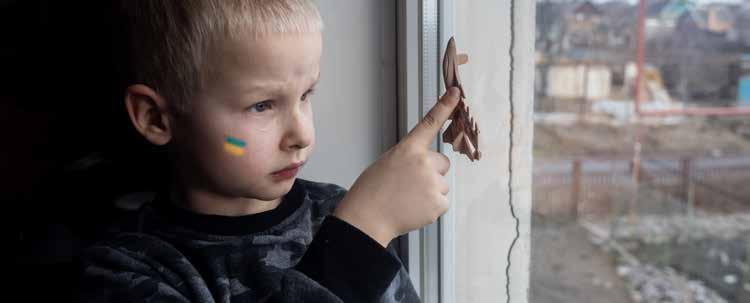
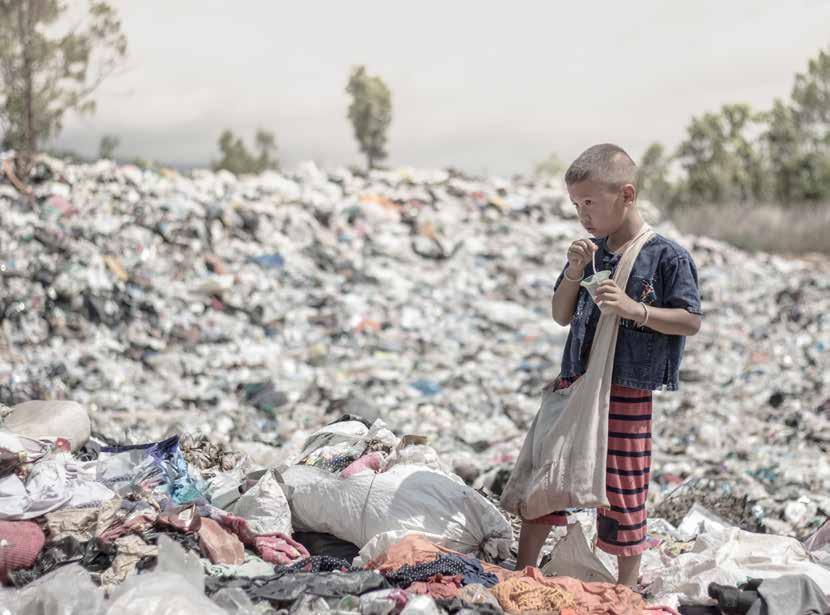
months of last year, the number of children killed or injured in conflicts exceeded the number recorded for the whole of 2023. Gaza, Ukraine and Sudan are among the hardest hit areas, with bombings claiming thousands of child victims.
The situation is particularly serious for girls, who suffer even more brutal violence than their male peers in war contexts. In Haiti, for example, cases of sexual violence against minors increased tenfold in 2024. Then there is the situation of children with disabilities, who are one of the groups most exposed to both violence and discrimination, often finding themselves without access to basic services.
In addition to the physical effects, war obviously has a devastating impact on the mental health of children. Growing up under bombs, seeing loved ones and friends die, living in constant fear, leaves deep scars that are sometimes irremediable. Many children develop post-traumatic stress disorder, anxiety, depression, have nightmares and tend to isolate themselves. These psychological wounds risk affecting the future of an entire generation, creating a spiral of instability that could last for decades and fuel new violence in the future by today’s victims.
The consequences of conflicts are also reflected in access to medical care. About 40% of unvaccinated or under-vaccinated children live in war-affected countries, which exposes them to epidemics of measles and other preventable diseases. In contexts where conflict is ongoing, health infrastructures are often destroyed or inaccessible, and millions of children are left without medical care. This leads to an increase in child mortality, which further aggravates the humanitarian crisis.
2024 was also the most dramatic year for humanitarian personnel, with 281 workers killed. This has made it even more difficult to ensure that children have access to basic aid, such as food, water, medical care and education, because when international organisations are unable to operate safely, they are forced to suspend their intervention. Attacks on aid workers, which are on the increase, therefore also contribute to depriving millions of children of the vital assistance they need.
In the face of this tragedy, Unicef has launched an urgent appeal to all parties involved in conflicts to respect international humanitarian law, protect children and guarantee them a future away from war. It is difficult, however, to assume that this cry for help will be heard.
We asked some descendants of Trentino emigrants to tell their stories in the first person, emphasising how their origin has directed and influenced them in life. This would not have been possible without the active and friendly cooperation of the Trentini nel Mondo Association, founded in 1957 with the aim of social solidarity and as a tool of aggregation and assistance for Trentino migrants and their descendants. The character we introduce in this issue is Tomás Franzoi, a fifth-generation descendant of Trentino emigrants in Argentina.
The view stretches as far as the eye can see when I look at the horizon in this immense plain.
The city of Avellaneda, in the north of the province of Santa Fé, Argentina, is located on the banks of the Paraná River. This is where I was born. I am Tomás Franzoi, I am 47 years old, I am a sculptor, I work with wood and I am a fifth-generation descendant of Trentino emigrants. My grandparents arrived in 1879 together with a small group of families from northern Italy, finding here a fertile land where they could put down roots. So they founded this city 145 years ago.
I was born in 1977. the backdrop to my childhood was a rural area, featuring economic difficulties but a wealth of creativity. I also have Criollo blood, also being the descendant of Spaniards and natives. The trees, other children and the surroundings were my playmates. It was there, at the age of five or six, that I took my first steps into the world of art, guid-
ed by my father Ervin, who taught me to draw and model clay as if it were a game.
My first conscious contact with the Trentino world took place during high school (I where I studied the technical-industrial curriculum). The Trentino Circle of Avellaneda invited me to participate in a competition to create a logo that would be published in the magazine ‘Trentini nel Mondo’. I still remember the excitement of reading an article about the traditional wood sculptors in Trentino.
Even then I was already making my first sculptures, using the skills I had picked up in a children’s art workshop in my hometown, where I learned the traditional method of sculpture. With these works I was also managing to earn some money. My adolescence and youth saw me actively involved in Catholic Church youth groups (an Italian legacy, with my grandmother reciting the rosary daily).

Tomás Franzoi poses next to one of his works
In 2000, Pope John Paul II invited all young people to the Jubilee in Rome. By selling my sculptures, I was able to fund my trip and see for myself the infinite artistic and cultural riches of Italy, travelling from north to south. Thanks to the Trentino Circle, I organised a visit to Trentino and, for the first time, set foot on the land of my travelling ancestors, with the absolute certainty that it would not be the last time. I also started to learn the Italian language.
During my youth I studied to become a physical education teacher, but the call of art was stronger and led me to unexpected paths. As a self-taught artist, and making art my main activity, I started creating works for churches all over the country, participating in sculpture competitions and winning prizes, awards and scholarships both nationally and internationally.
To the traditional method of sculpture I added the use of the chainsaw for large works, a technique
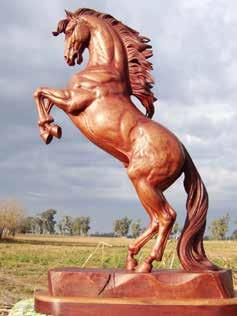
that opened the doors of the world for me. In 2017, I won a speedcarving (quick carving with chainsaws) championship in Italy. In the same year, and in the following year, I visited Castelnuovo, in Valsugana, the town my ancestors had left behind, where I made three sculptures as a testimony to the legacy of work left to us by our grandparents.
During those trips, I was told that the area from which my ancestors emigrated once boasted an important wood industry. I have several generations of carpenter, cabinetmaker and luthier relatives.

The original ancient inhabitants of my land in Argentina also carved their canoes from tree trunks, as well as tools and everyday objects. I like to imagine that the blood flowing in my veins also contains some sap....
Art allows me to get close to people’s souls, overcoming all cultural and language barriers. Argentina, Chile, Paraguay, Ecuador, Italy, Germany, France, Holland, Israel and Cambodia are part of my journey. I make figurative sculptures, trying to portray people’s culture and traditions, tell stories and preserve memories, reusing fallen tree trunks, many of which carry centuries of history in their DNA.
For some time, I have been organising a ‘Biennial International Sculpture Symposium’ in my city together with the Municipal Department of Culture. In the last edition we had the honour of hosting a sculptor from Trentino: Egidio Petri. All the works created during the symposium now belong to the city of Avellaneda. I have been teaching the art of woodcarving for 29 years. Together with the Associazione Trentini nel Mondo (Association of Trentino in the World), various Trentino Circles in Argentina, consulates, universities and municipalities, we organised a course in traditional wood sculpture on the theme of the Nativity, taught by Egidio Petri, from September to November 2024, with the aim of keeping our roots alive and conveying the sculptural heritage of Trentino tradition. Students from different locations in Argentina participated in the course.
I have been married for 20 years to Magdalena Giuliani, who is also a descendant of Trentino immigrants, and we have three children. This year she will accompany me for the first time to Italy on a sculptural tour.
The land where I was born has given me the opportunity to help it grow. Today I am also president of the City Council and we work on various projects with Italy, always keeping the link with neighbouring Trentino clubs alive.
I believe that I am, as indeed we all are, the synthesis of many paths that cross, intertwine and widen, creating new paths that will be travelled by those who will come after us.
The horizon in my beloved Avellaneda seems endless, but sometimes, if you look closely, over there (or maybe not even that far away), you feel as if you are seeing the mountains of Trentino.

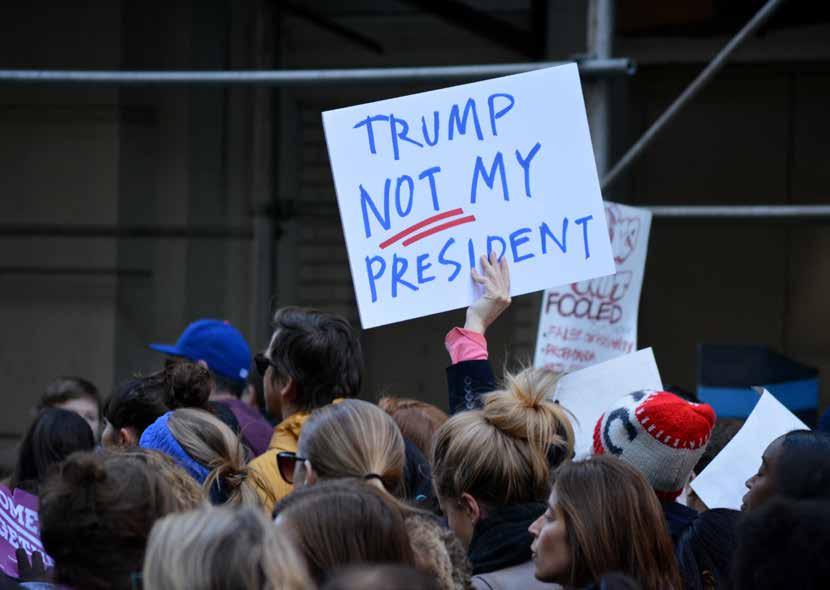
To be continued from page 1...
The truth, at just more than a month after taking office, is that the new president’s activism on this front has already been evident, but with results that seem, at best, highly questionable.
In a nutshell, in fact, on the Middle East front, the proposal to relocate the inhabitants of Gaza to a few countries in the neighbouring area has met with almost generalised opposition from those directly concerned, i.e. the residents of the Strip and of the Arab capitals potentially involved, with the only obvious exception being Israel.
On the Russian-Ukrainian front, his deliberate desire to initiate a direct channel of communication with Putin, bypassing Ukrainian interlocutors, which began with a White House-Kremlin telephone link that anticipated more ‘personalised’ follow-ups, predictably clashed with President Zelensky’s unequivocal njet. And, in addition, also with that of the European allies, unwilling to acknowledge the ‘new Tsar’ as a credible, reliable player and, consequently, extremely wary of any openness to compromise on his part. Gathered in Brussels at the very moment when the two big leaders were having their long conversation, discussing border recognition and future geopolitical arrangements in the East-European area, the 27 European states were reiterating
their firm demand for a ‘just, global and lasting’ Peace. Against this backdrop, and although it seems premature to speak of a ‘transatlantic twilight’, recomposing the ever more evident divergence of European and American positions on security dossiers, in the broadest sense (first and foremost the possibility of Kiev’s future entry into NATO) appears to be a major undertaking, as confirmed by the possible exclusion of the European Union from the US-Russian negotiating session scheduled to take place in Saudi Arabia.
That said, to the aforementioned ‘declared objectives’ on which we have dwelt so far, already in his first days in the Oval Office President Trump had added others, unknown to all but, perhaps, the members of his close entourage.
Generally framed in the category of ‘territorial expansion’, they translate into the 47th president’s intention to incorporate Canada, the Panama Canal and the Danish island of Greenland into the US federation, in a timeframe and in a way that have yet to be verified.
In the first case, Canada’s resigning Prime Minister Trudeau, after having at first spoken of a mere ‘provocation’, changed his mind, going so far as to describe Trump’s strident stance in front of an audience of local businessmen as ‘not at all a joke but, on the contrary, a serious risk’. His country is, moreover, particularly ex-
posed to the new sanctions regime, both because of its territorial contiguity with the United States and the very high percentage (75%) of its exports that are absorbed by the US market.
Turning to the Panama Canal, President Mulino (recently received by Mattarella at the Quirinale during a state visit) was indeed firm in reaffirming his country’s ‘total sovereignty’ over the Canal, consequently ruling out the granting of favourable tariffs to the numerous ships flying the Stars and Stripes flag that pass through it. At the same time, the Panamanian decision to prematurely terminate the Belt and Road Initiative agreement signed some time ago with China was certainly not voluntary but induced by the not disinterested advice of the new Secretary of State Rubio, on a mission to the Central American country. The way the White House sees things, this arrangement had the demerit of placing the Canal in the category of ‘critical logistical routes’, i.e. detrimental to Washington’s interests, on a par with those that exist in the seas of South Asia.
The third and final case, that of Greenland, is worth dedicating a few more lines to, since it is, according to some observers, the one most likely to result in the creation of the 51st state of the Federation within an unspecified timeframe. This is especially the case if Greenlandic voters, who are also called to vote on the independence referendum in April this year, should vote to secede from Copenhagen. According to pollsters, there would be little doubt about this, as 9 out of 10 inhabitants would be in favour. At that point, the conditio sine qua non (the fact that the island belongs to a friendly country and NATO ally such as Denmark would make a change in the status quo implausible even for an unscrupulous Trump) would no longer be valid, and the authorities of the newly
formed state would of course be free to decide its own fate. On the other hand, it is undeniable that the Arctic Island is of great geo-strategic (transport routes) and economic interest (rich subsoils, primarily due to their rarity) not only for the United States and NATO, but also for Russia and China, which have increased their military presence (patrolling coastal areas) in the area in recent years with this in mind. In relation to an island that nevertheless appears to be undergoing a strong geo-political transformation, a widely shared opinion comes from respected analyst Paul Hockenos, who notes that “Greenland is an ideal project for the trans-Atlantic allies to pursue together, in consultation with native Greenlanders. The biggest obstacle to this process may be Trump’s public bullying’.
In conclusion, unless one considers the international system inherited from the Second World
War to be completely obsolete, it seems highly unlikely that the United States would choose to seize one or all three territories through military force. Nevertheless, the prospect of a member of the international community being “acquired” by another state with greater resources remains deeply troubling. Resorting to a procedure, in fact, not too dissimilar from the one in which two football teams compete for the services of a talented striker or two multinational companies vie for the skills of a qualified manager.
Our hope, as you will have understood, is that here we are seeing the application, in a superficial and careless manner, of mere rhetorical exercises, that can therefore be relegated to the realm of wishful thinking.
Reggente Marco Marsilli, Foundation President
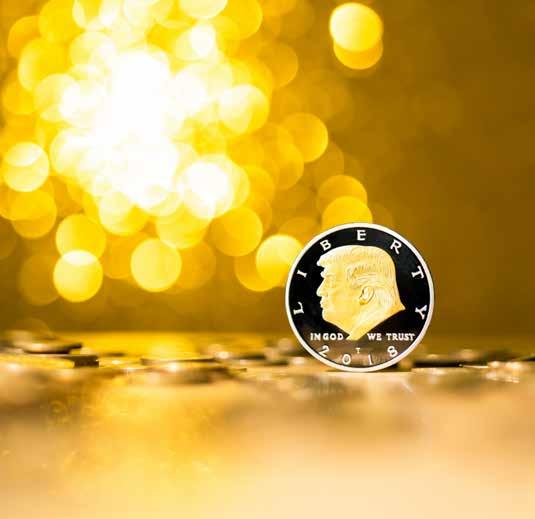
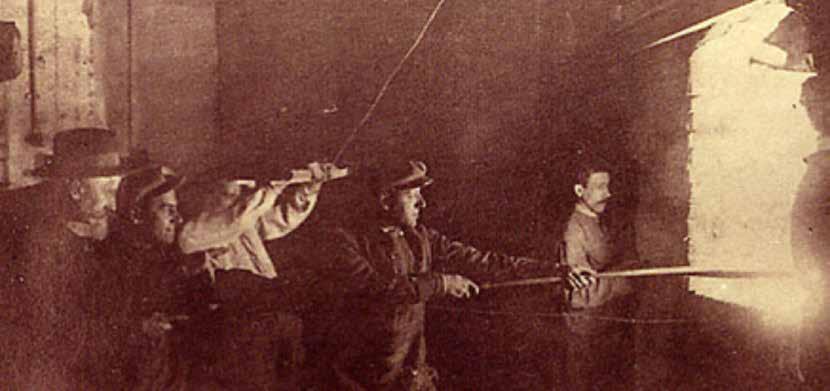
FOR WHOM THE BELL TOLLS - P 16
Once upon a time there was a song called ‘Maria Dolens’. It was sung by a great Italian voice, elegant and sober as was the custom in the mid-20th century. It all began on 28 August 1960, at the Alpine Song Festival held at the Zandonai Theatre in Rovereto. Bixio Cherubini and Carlo Concina, incidentally those who wrote Vola Colomba and dozens of other memorable hits, had composed a piece dedicated to the Bell for the evening. They had written it for Nilla Pizzi who, despite being a serial Sanremo winner apparently did not use autotune.
It was set to be a memorable night, and it was. But not because of that song, which in fact is nowhere to be found anymore. Pizzi sang and was a great success as she often was, but she was not the star of the evening. Immediately after her performance, Father Iori, the Director of the Bell, intervened to announce that the Bell needed to be recast. The audience in the auditorium were
not expecting this, and it was a cold shower for everyone. A few days later, on 31 August, while Nilla Pizzi sailed to other shores, Maria Dolens sounded her last chimes from the top of the castle bastion. ‘The Bell is broken, it must be recast,’ was the blunt announcement made in a Regency press release. Father Iori informed the Order of Malta, knowing that the recasting project needed financing and a foundry that was up to the task.
A small executive committee was set up, and began on the one hand to address the technical issues, and on the other hand to think about a new arrangement for the Bell. Meanwhile, Father Iori, a practical man, had travelled to Rome for a series of ministerial talks. There were projects to be carried out or launched, and in spite of everything there was work to be done. On 25 October, the Director was received in private audience by Pope John XXIII. He was given an artistic reproduction of the Bell, and asked
to provide a hand-written phrase to be engraved on the casing of ‘Maria Dolens’ once it had been recast. A week later, the Pope’s ‘thought’ arrived in Rovereto: In pace hominum ordinata concordia et tranquilla libertas, ‘In peace among men, ordered harmony and serene liberty’. A warning that is clear, sharp, precise, and perhaps for this very reason difficult to put into practice. A way of emphasising that Peace is not simply the absence of war, but a balance between peoples, based on mutual respect and a freedom experienced without fear. As in a song, it is important that everything is in its place, that the harmony works, that no one exceeds their limits. Values that are almost taken for granted in music, but no longer appear to be so in everyday life. And this is why those words must be remembered today, in an era like ours, where diplomacy struggles to counter the return of force as a tool for resolving international disputes.